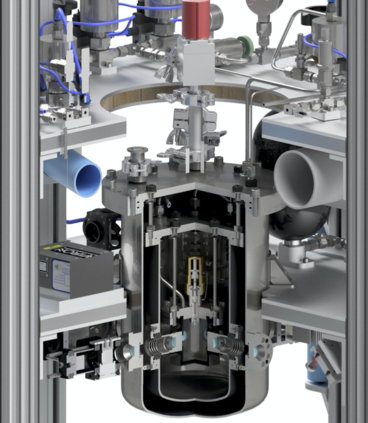Investigation on the combustion of single LOX droplets in a hydrogen environment under microgravity conditions (HYDRA)

research area: combustion
experiment title:
Investigation on the combustion of single LOX droplets in a hydrogen environment under microgravity conditions
experiment acronym: HYDRA
funding agency: DLR
grant number: 50WM1645
performing organization:
ZARM, Universität Bremen /
Institut für Physikalische Hochtechnologie e.V. (IPHT), Bereich Lasertechnik, Jena /
University of Washington, USA
prime investigator:
Christian Eigenbrod / Dr. Wolfgang Paa / Prof. Hermanson
experiment objective
abstract
The goal of the project HYDRA is the investigation on the combustion of single liquid oxygen (LOX) droplets in a hydrogen environment under microgravity conditions. To enable these conditions an experimental setup was developed and integrated into a drop tower capsule. In parallel to the drop tower experiments the University of Washington develops a numerical combustion simulation and parametric studies are performed to be compared with experimental results. Typical applications for hydrogen-oxygen combustion are rocket engines. The main components of the experimental setup are the combustion chamber, which is sheathed by a liquid nitrogen (LN2) container and a vacuum container for insulation purpose. The combustion chamber is developed to withstand an initial pressure of 52 bar (supercritical). The initial temperature will be 77 K by cooling with LN2. To generate a LOX droplet gaseous oxygen will be led into a cryogenic needle valve. Due to the LN2 sheath the oxygen condensates and will enter the combustion chamber when the valve is opened. A single droplet will then be suspended. In microgravity the droplet will be ignited through a plasma discharge generated by a Nd:YAG laser and the combustion will be observed. Ambient pressure and the constitution of the atmosphere are the parameters to be varied. To be measured or diagnosed are: the droplet diameter through shadowgraphy, the instant of the flame and it’s diameter through OH-PLIF, OH-chemiluminescence and Schlieren optics, the temperature field information are derived from the density gradients visualized through the Schlieren optics.
experiment campaigns
experiment year: 2019
number of drops: 58


 "
"